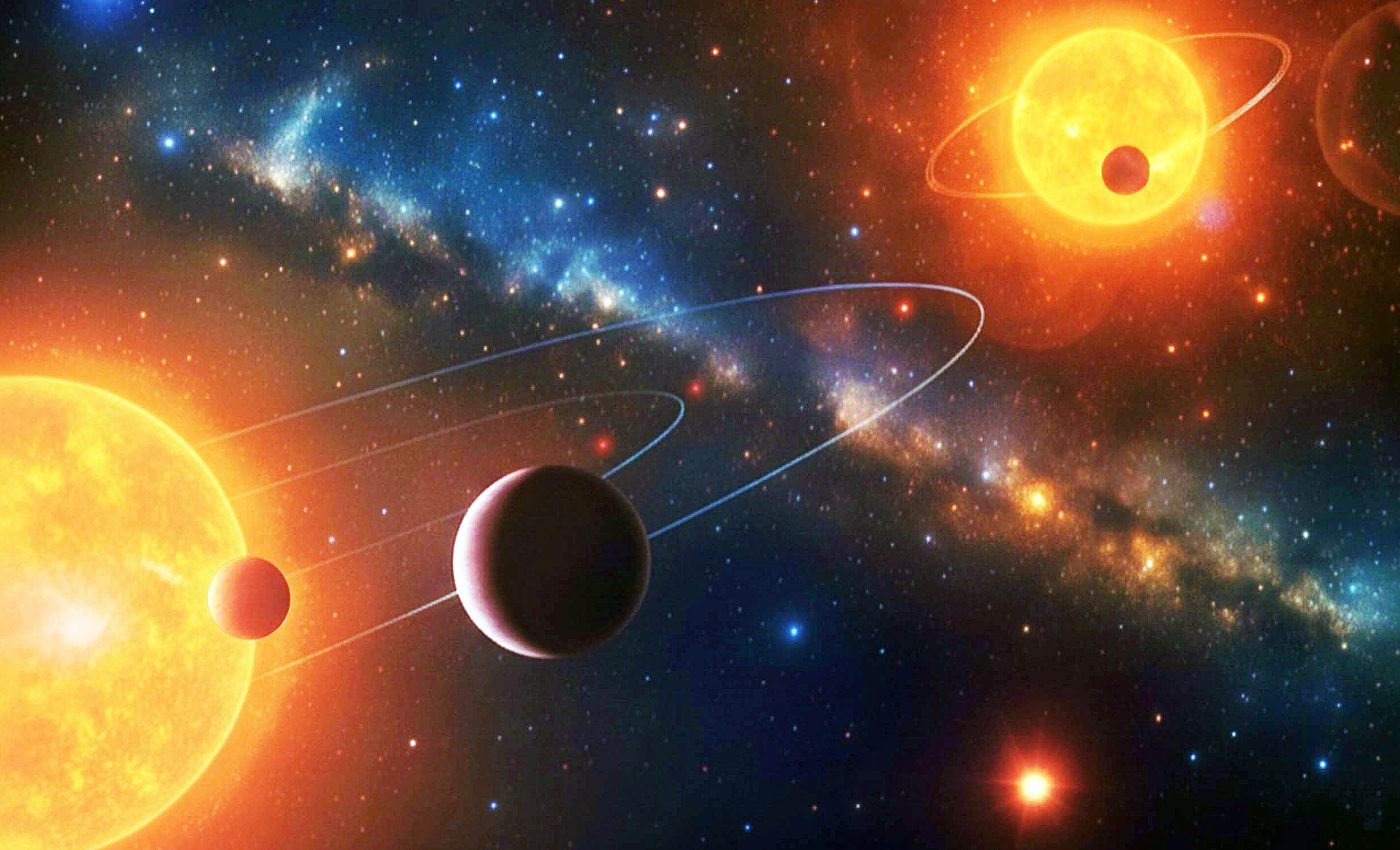
Remarkable discovery reveals three Earth-like planets found in a system with two stars
A nearby double star hosts two confirmed Earth-size planets and a third strong candidate. The system, called TOI-2267, sits about 73 light years from Earth and pushes hard on ideas about how planets form and last.
The team drew on space data and a global network of small telescopes. Their work points to a rare setup that could put one planet around each star in the pair. The full paper details the evidence and the open questions.
Meet binary system TOI-2267
“Our analysis shows a unique planetary arrangement,” says Sebastián Zúñiga-Fernández of the University of Liège.
TOI-2267 is a compact binary, meaning two stars in a very tight orbit that tug hard on each other. That closeness makes it harder for planets to form and to keep safe long term.
The stars are small, cool M dwarfs, low-mass red stars that emit faint light. Because these stars are dim and compact, a planet blocks a larger fraction of their light when it passes in front, making transits easier to detect.
Two of the planets are confirmed and near Earth in size. One takes about 2.28 days to orbit and the other 3.49 days.
A third signal repeats every 2.03 days and remains a candidate pending one more clean ground detection.
How scientists found TOI-2267
NASA’s TESS watched the star and caught the regular dips. Ground telescopes then chased selected transits to pin down timing and rule out look-alike false alarms.
The group corrected for extra light from the second star so the planet sizes would not be underestimated.
The binary’s projected separation is only about 8 astronomical units, roughly 744 million miles. For such a close pair, strong tides and disk truncation can starve young planets of building blocks.
A landmark survey showed that M dwarfs are often in multiple-star systems, but the close ones tend to make life tough for planet formation. That background frames why TOI-2267 is unusual.
The authors report that all three worlds cannot stably orbit the same star. Their preferred picture has two planets circling one star and the remaining object orbiting the other.
This split arrangement would make TOI-2267 a rare case and a clean test of ideas about how planets take shape in two-star settings.
What orbiting planets show
The two confirmed planets sit close to a mean motion resonance, orbits whose periods form a simple ratio. Here the ratio is near 3 to 2, a pattern seen in other compact systems.
Near such ratios, theory predicts measurable transit timing shifts that depend on mass and a small free eccentricity. In this system, the expected timing wiggles are small, so clocking them well likely needs a large telescope.
The candidate’s period is too close to the inner confirmed world for comfort if both orbited the same star.
Simulations show that pairing the candidate with the outer planet remains calm. That leaves a tidy story: the inner two share a host and the candidate belongs to the companion star.
A comprehensive review finds that binaries can prune disks, speed up inward drift of solids, and strip mass early. Those trends favor small rocky planets on short orbits, which is exactly what TOI-2267 seems to hold.
Future planet hunting
The planets are likely too warm for surface water, but they are small and nearby. That makes them tempting targets for follow-up with the James Webb Space Telescope to measure masses and, if lucky, test for atmospheres.
The team’s light curves already show rapid stellar rotation and flares. Activity matters because star spots can mimic tiny dips that look like planet transits. More time series work will help separate star noise from planet signals.
Resolving which star each planet orbits is the next crucial step. High-precision, high-resolution time series that split the pair on the sky can nail this down.
Success would lock in the system as a benchmark for worlds in the tightest two-star neighborhoods.
If the candidate is confirmed, TOI-2267 becomes a strong case of a double star with transiting planets around both stars.
That would give modelers a rare natural lab to test how disks behave when two suns sculpt and shear them from birth.
The broader tally of planets in multiple-star systems is rising. Surveys keep turning up rocky worlds where older models said chaos should win. TOI-2267 adds weight to a simple idea, that nature often finds a path even in hostile conditions.
The study is published in Astronomy & Astrophysics.
Featured image: Artist’s impression of TOI-2267. Credit: Mario Sucerquia/University of Grenoble Alpes
—–
Like what you read? Subscribe to our newsletter for engaging articles, exclusive content, and the latest updates.
Check us out on EarthSnap, a free app brought to you by Eric Ralls and Earth.com.
—–













